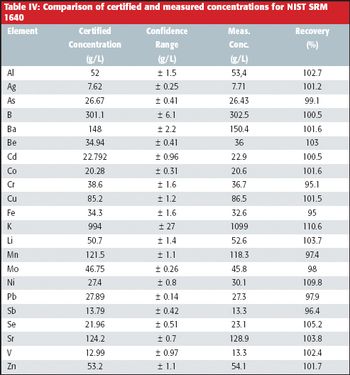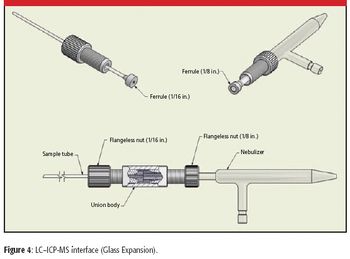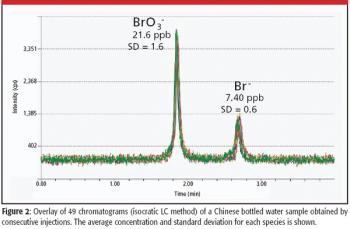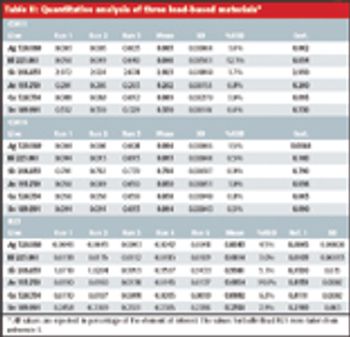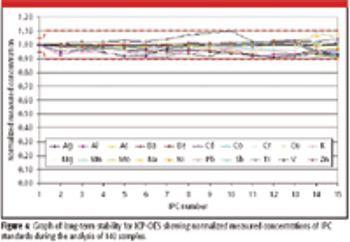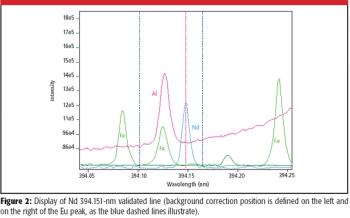
Special Issues
Multiline analysis, which consists of using several lines per element to detect positive or negative bias caused by spectral interferences, is an ideal way to use all the information emitted by the plasma and collected by a charge-coupled device detector. However, method development and validation become more complex. Dedicated software has been developed to overcome it, and analysis of geological samples will illustrate their benefit in achieving high reliability of results.

